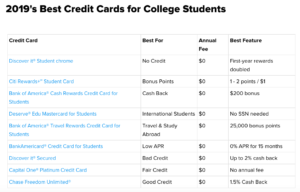Content provided by LendEDU.
For the fourth consecutive year, LendEDU is pleased to once again publish our annual Student Loan Debt by School by State Report, an in-depth analysis of student loan debt figures at nearly 1,000 four-year private and public higher education institutions across the United States.
While the figures change each year, the narrative certainly does not; student loan debt continues to be a growing issue in the U.S. and at nearly all schools in the country as the cost of college continues to rise.
Nationally, outstanding student loan debt sits at $1.52 trillion, making it the second largest form of consumer debt trailing only mortgages.
On an individual scale, the average borrower from the Class of 2018 received their diploma and left campus with $28,565 in student loan debt, up from $28,288 that was owed by the average Class of 2017 borrower.
Because of these eye-popping numbers that have now elevated the issue of student loan debt to the national scale as evident by the recent 2020 Democratic debates, LendEDU places tremendous value on the annual Student Loan Debt by School by State Report.
Through licensing data from the annual Peterson’s financial aid survey, we can keep both current and future college students up-to-date on which institutions tend to lead to high levels of student loan debt, and which bring on the opposite, but more welcomed, outcome .
Further, as Congress continues to discuss the reauthorization of the Higher Education Act that could potentially hold certain schools more accountable for egregious student debt levels, this school-specific report could be extremely valuable for lawmakers and administrators alike.
Peterson’s voluntary financial aid survey collects responses from nearly 1,000 four-year public and private institutions of higher education. The subsequent data allows us to provide the following valuable information on each of those schools for our readers:
- Average student loan debt per borrower per college
- Percentage of graduates with student debt per college
- Average student loan debt per borrower per state
- Percentage of graduates with student debt per state
- Average private student loan debt per borrower
- Percentage of graduates with private student debt
- Overall average debt rank in the United States (from lowest to highest debt per borrower)
- Overall average debt rank in each state (from lowest to highest debt per borrower)
- Private institutions with the lowest & highest average debt
- Public institutions with the lowest & highest debt
- Percent change in average student debt per borrower vs. last year’s data for each school and state
The LendEDU team has worked diligently to compile this data and organize it in a user-friendly manner. If you have questions about this report, please email brown@lendedu.com.
It is our hope that by reading LendEDU’s fourth annual Student Loan Debt by School by State Report, you are inspired to have productive conversations about student loan debt and the cost of college in the U.S.
Table of Contents
